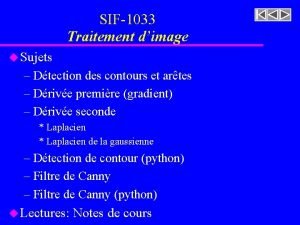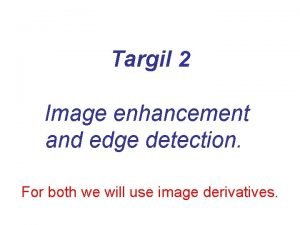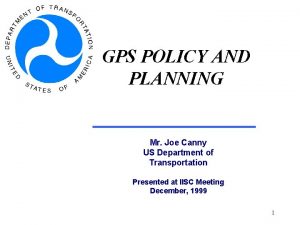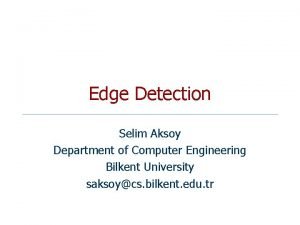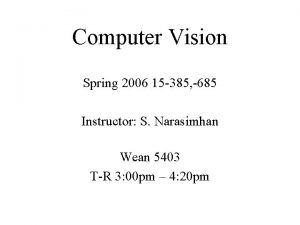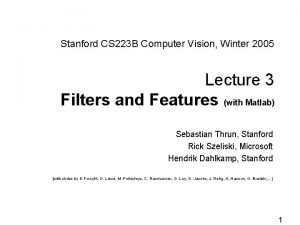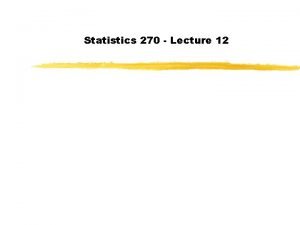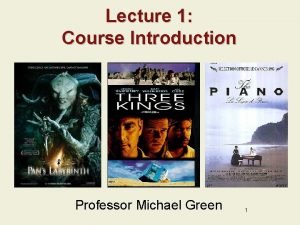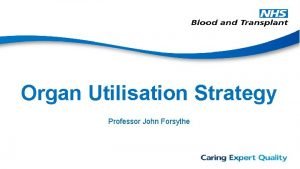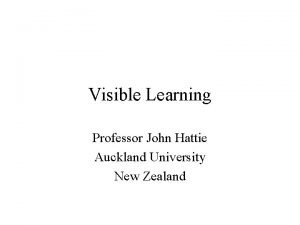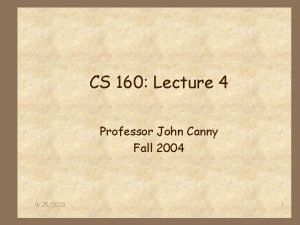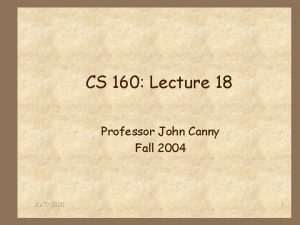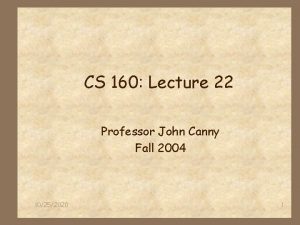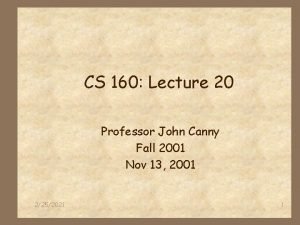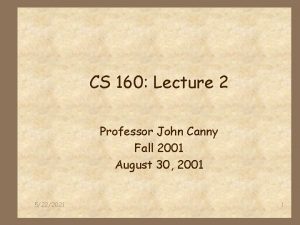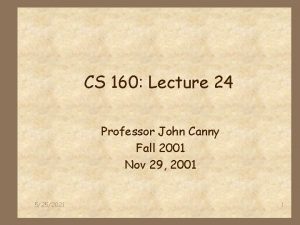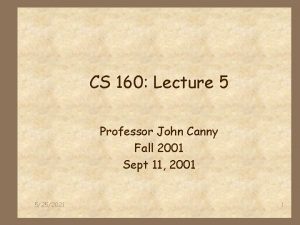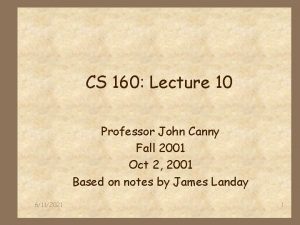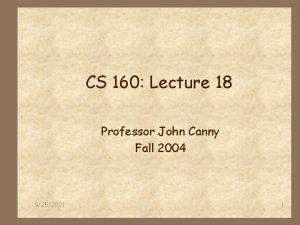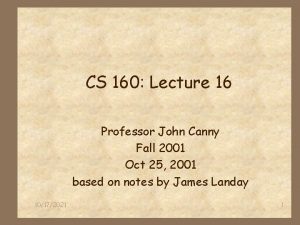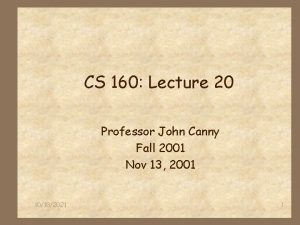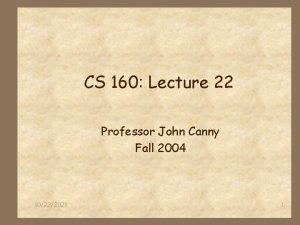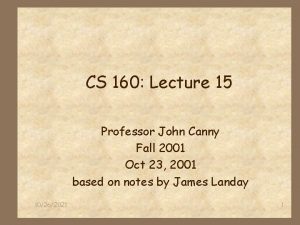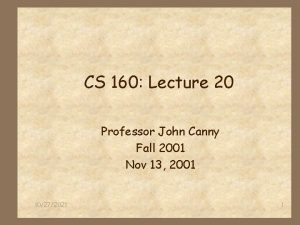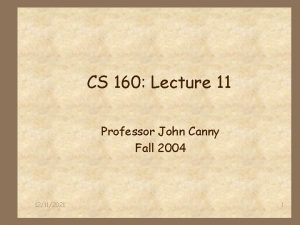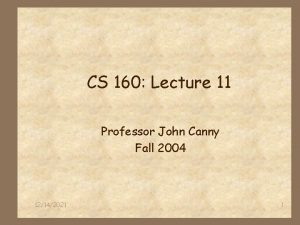CS 160 Lecture 13 Professor John Canny Fall

























- Slides: 25

CS 160: Lecture 13 Professor John Canny Fall 2001 Oct 16, 2001 9/11/2021 1

Administrivia 4 Please sign up for a group meeting with JFC or Miriam. E. g. today 4 -5: 15 pm 9/11/2021 2

Teams 4 “A team is a small number of people with complementary skills who are committed to a common purpose, set of performance goals, and approach for which they hold themselves mutually accountable. ” - K&S 4 Unpacking this statement. . . 9/11/2021 3

Teams: Small numbers 4 Two problems arise when teams get too big: 4 Centralization: a few people dominate, and several hardly contribute at all 4 Communication: the overhead for communication goes up with the number of people 9/11/2021 4

Team size 4 Team sizes vary of course, but for much creative work, it seems like 4 -7 is the ideal range, with 5 being about optimal. 9/11/2021 5

Brooks Law 4 In the “Mythical Man Month”, Fred Brooks observed that from many studies the perprogrammer performance in programming teams decreases with the size of the team. 4 This is often called “Brooks Law” (programming teams are less than the sum of their parts). 9/11/2021 6

Communication modes 4 Sproull & Kiesler studied team programming in courses at CMU and found: 4 Teams that did more communication by email rather than in face-to-face meetings were more productive. Teams with only F 2 F meetings were less productive. 9/11/2021 7

Communication modes 4 Sproull and Kiesler’s work reinforces the idea that communication impacts group effectiveness. 4 Email is good for routine coordination and communication. 9/11/2021 8

Common Purpose 4 Sense of purpose is a big part of team success. 4 K&S: Set measurable performance goals 9/11/2021 9

Goal setting 4 Defines specific work products 4 Facilitates communication and constructive conflict 4 Attainable: maintain focus 4 Leveling effect: focus on task rather than status 4 Defines small wins as part of the larger purpose 4 Goals are compelling 9/11/2021 10

Common purpose 4 Common purpose is helped by group affinity (people liking each other), but that is not necessary. 4 Common purpose can also be achieved by interdependence (group members evaluated and rewarded together) 9/11/2021 11

Communication again 4 Face-to-face meetings are a good way to: 4 Create and foster common purpose 4 Resolve conflict 4 Email and phone are good for 4 Routine communication and decision-making 4 Coordination, reporting 9/11/2021 12

Constructive Conflict 4 Sometimes, groups strive for harmony and strong consensus. 4 Generally speaking, the better the group feels about a decision, the less effective that decision is. (groupthink) 4 Good decision-making involves resolution of differing viewpoints - constructive conflict 9/11/2021 13

Conflict and Creativity 4 In fact the most effective generator of creativity in a group is an authentic dissenter: 4 Someone who is credible and who genuinely disagrees with the rest of the group. 4 Some groups use “devil’s advocates” for this reason. They’re not as effective. 9/11/2021 14

Conflict and Creativity 4 The key to constructive conflict is to focus on the task, and on individual ideas. 4 Ideas and opinions must be detached from the individual. 4 Ideas have to be clarified and developed before they can be criticized. 9/11/2021 15

Team membership 4 Skills: 4 Technical/functional (experts) 4 Problem-solving/decision-making 4 Interpersonal skills 9/11/2021 16

Interdisciplinary teams 4 Communication on the programming team was a problem. For the interdisciplinary team, it is a big problem. 4 Teams often depend on “gatekeepers” or facilitators with interdisciplinary skills and vocabulary to help team members understand each other. The differences are: 4 Vocabulary, Meaning, Purpose 9/11/2021 17

Interdisciplinary teams 4 Communication on the programming team was a problem. For the interdisciplinary team, it is a big problem. 4 Teams often depend on “gatekeepers” or facilitators with interdisciplinary skills and vocabulary to help team members understand each other. The differences are: 4 Vocabulary, Meaning, Purpose 9/11/2021 18

Building teams: Urgency 4 Establish Urgency 4 Purpose is worthwhile 4 There is a clear way to move ahead 9/11/2021 19

Building teams: Select for Skill 4 Manager should choose team based on skills of members, and potential skills. 4 Should personality be a factor? … stay tuned. 9/11/2021 20

Setting rules of behavior 4 E. g. no phone calls in meetings 4 no sacred cows 4 one conversation at a time 4 encourage wild ideas 4 no finger-pointing. . . 9/11/2021 21

Set a few immediate goals 4 Make them performance-oriented 4 When results occur, the team starts feeling like a team 9/11/2021 22

Bring in fresh facts and ideas 4 Fact: teams do not share enough information (Hinds 199 x). 4 Regular updates and exchanges are much more valuable than they seem. 4 This builds a sense of community and common knowledge. 9/11/2021 23

Spend time together 4 Casual or “unstructured” interactions are very important for building shared context. 4 Putting people in the same space is the best way to do that. 4 Recreating this online is a bit of a challenge. 9/11/2021 24

Positive Feedback 4 Don’t miss an opportunity to reward or encourage legitimate effort. 4 Positive reinforcement encourages more effort and performance beyond expectations. 9/11/2021 25
 Qual tipo de filtro é o de canny?
Qual tipo de filtro é o de canny? What is canny edge detection in image processing
What is canny edge detection in image processing Filtre laplacien
Filtre laplacien Canny
Canny Joe canny
Joe canny Canny
Canny Canny
Canny Canny sebastian
Canny sebastian Edge detection
Edge detection Promotion from assistant to associate professor
Promotion from assistant to associate professor A college professor never finishes his lecture
A college professor never finishes his lecture What is this
What is this 01:640:244 lecture notes - lecture 15: plat, idah, farad
01:640:244 lecture notes - lecture 15: plat, idah, farad Professor john forsythe
Professor john forsythe Professor john forsythe
Professor john forsythe Professor john wood
Professor john wood Holland self directed search
Holland self directed search Feedback hattie effect size
Feedback hattie effect size Professor john hughes
Professor john hughes John stanley temple
John stanley temple 70in yüzde 40ı
70in yüzde 40ı Digital thermal sensor
Digital thermal sensor 12vac35-105-620
12vac35-105-620 Wac 296-800-160
Wac 296-800-160 Patrick liang
Patrick liang Konica minolta bizhub 160
Konica minolta bizhub 160


